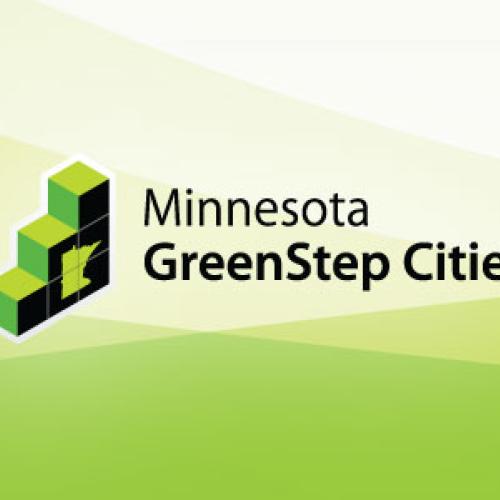As Minnesota cities face tighter budgets, the need for money-saving innovations without cutting services, grows rapidly. One place to find savings is through sustainability, which is where a state program aimed at a number of factors—from improving energy-efficient public buildings to innovative waste-collection systems—is helping. Introducing: Minnesota GreenStep Cities.
In 2008, the legislature tasked the Minnesota Pollution Control Agency, the Minnesota Department of Commerce, and the Clean Energy Resource Teams—a group focused on community-based clean energy—with developing a proposal for expanding the state’s “Green Star” award program from individual facilities to entire municipalities. The result was Minnesota GreenStep Cities, a voluntary program for cities to measure and track sustainability progress.
To date, 54 cities have joined the program, which asks communities to begin by passing a resolution stating their intent to pursue as many of the 28 sustainability best practices as possible. Cumulatively, participating cities have completed nearly 1,000 innovative actions related to buildings and lighting, land use, transportation, environmental management, and economic and community development. The extent of this progress as of last summer is shown in the graph below (wedges represent best practices; the three rings show the level of sustainability achieved, from less sustainable in the center to more sustainable at the outside).

GreenStep Cities’ best incentive is a concrete and navigable path to implementing sustainable, innovative ideas, which for many cities is enough to make the commitment worthwhile. As Andrea Lauer, Royalton’s Mayor wrote in reference to the program, “There are more things that cities can do to impact budgets than cut staff and services. We need to think long-term and make changes that will impact not only the budget, but the environment.”
Here are some examples of what cities are doing:
- Maplewood’s organized residential waste collection program is expected to save approximately $1 million annually on road repair.
- St. Cloud has the nation’s first bus powered by vegetable oil, which costs $2.30 per gallon.
- Rogers has completed 13 energy efficiency projects that have a cumulative payback under 3 years. And Royalton has done a host of creative things.
From a governance perspective, GreenStep Cities is also innovative in making use of a public-private partnership of 7 organizations and government agencies, to which Program Coordinator Philipp Muessig attributes much of the program’s success.
Program Parameters
Cities are recognized for their actions and progress through Steps:
- Step 1 for passing the initial resolution
- Step 2 for completing a handful of actions
- Step 3 for completing several actions
Statistically, GreenStep Cities are larger and younger in population than the average Minnesota city, but they represent a wide ideological spectrum. One reason for this may be the freedom that cities have in choosing actions. Some cities, like Rogers, have focused heavily on cost-effective actions, like implementing quick-payback, energy saving improvements. Edina seems to be focusing more on community engagement and the environment. Eagan has completed an action in nearly all of the 28 best practices.
Whatever the approach, GreenStep Cities offers a path to innovation in a time when cities are expected to do more with less.
Progress at a Glance
The graphics below show the level of sustainability achieved as of last summer by a handful of cities. Wedges represent best practices; the three rings indicate the level of sustainability achieved, from less sustainable in the center to more sustainable at the outside (in general, more dark-blue means more sustainable). These graphics are intended to provide an at-a-glance comparison and do not show the full extent of detail available on the GreenStep Cities website.
Click here to view the original blog post from the Minnesota 2020 website.
Other Local Government Energy Action Community Engagement Stories:
- Stewardship a cornerstone for City on the Lake: White Bear Lake shares sustainability practices
- Elk River provides energy education, outreach and audits with Project Conserve
- City of Oakdale takes steps toward sustainability with energy-saving initiatives
- Neighborhood Energy Service worked to save energy in the homes of St. Paul residents
- No such thing as the bus rider blues: Linden Hills Power & Light’s Public Transportation Initiative
\About the Local Government Energy Action Series:
This year-long effort tells the stories of nearly 50 Minnesota municipalities, counties, and schools and the tangible results of their energy-saving efforts to inspire others to take their own actions.
Local Government Energy Action is brought to you by the Clean Energy Resource Teams (CERTs) in partnership with the Minnesota Department of Commerce, Division of Energy Resources.


